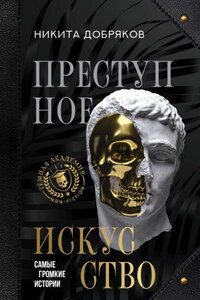Interior of Blue Mosque. Isfahan, Iran.
This book consists of two sections. The wide-ranging introduction attempts to outline the basic stages in the development of Persian Art, from the first appearance of Persian peoples on the Iranian plateau during the 10th-8th centuries BCE up to the 19th century CE. Detailed commentaries on the works of art reproduced here provide not only factual information (dates, iconography, provenance, techniques, etc.), but are also, in many instances, followed by brief scholarly studies of the examples of Persian art housed in various museums of the former Soviet Union that are, in the authors’ opinion, of the greatest interest and significance. Some of these objects are reproduced and discussed here for the first time.
As far as possible, we have tried to select only such works as are typical of Persia itself, and not those produced beyond the present-day borders of Iran (Transcaucasia, Central Asia, etc.), however strongly influenced by Persian culture these may have been. At the same time, we have tried to present material to illustrate our basic thesis, namely that Persian art, though it had periods of ascendancy and of decline, remained coherent, individual and profoundly traditional throughout its development, from its formation in the 10th-7th centuries BCE right up to the 19th century CE. This is despite the violent, often tragic political upheavals, fundamental ideological changes, foreign invasions and their concomitant, devastating effect upon the country’s economy.
In attempting to sketch a general outline of the development of Persian art over this vast period, we have been obliged to set aside artistic descriptions or analyses. The specific “morphology” and “syntax” of Near-Eastern art differs fundamentally from Western art. There is a lack of source material, insufficient analysis of the work of some periods, and art history suffers from terminological inflexibility – how many more arguments could be put forward in support of the indisputable fact that at the present time, so far as Near-Eastern art is concerned, no serious artistic analysis is possible. At the moment, the task of fundamental importance is to interpret the objects in a historical light, to attempt to analyse them as one of the sources for a history of the culture of one period or another and investigate these objects in such a way as to enable them to fill the considerable gaps in our reconstruction of the ideological, political and economic history of Iran.
Our present state of knowledge inevitably means that we can plot the course of the development of art only approximately; nevertheless, the points along this course tally with all the sources, written and otherwise, on the history of the period. Research into Persian art is impeded by a number of obstacles that are extremely difficult to overcome. From the foundation of Persian art to the end of Sassanid rule there are very few antiquities extant, and the chief danger in suggesting an outline for art of this period is that one is forced to draw excessively straight lines between the rare incontrovertibly established facts. The result is an incomplete and problematic description. Yet even the drawing up of such outlines is made extremely difficult by the need to take into account a whole network of facts – from iconographical analyses of cultural artefacts to linguistic studies. Confidence in the accuracy of the resulting outline is inspired only in those cases where there is no contradiction between any of its component elements. In other words, recourse to a very wide range of sources of the most varied nature is required.
On the other hand, a vast number of objects survive from the Middle Ages, yet here the construction of outlines is far too complex. At every point along the way, the researcher is confused by the attempt to take into account all the twists and turns of development inherent in the material itself, and in a comparison of written sources with information contained in any inscription there might be on the object. There is thus a real danger of drowning in a sea of facts, albeit incontrovertibly established facts, without having clarified the general trends.
There is yet another danger – that of the “academic” illusion, which links the cardinal ideological or political changes (for example, the change from the Zoroastrian religion to Islam or, say, the conquest of Iran by the Seljuk Turks) far too closely to developments in the art produced by that culture. There are a number of further difficulties – the unreliable dating of individual objects, lack of data as to origin, etc.
As far as possible, we have attempted to draw a clear distinction between two levels, the prestigious works of art reflecting concepts of an ideological, official, dynastic or other such nature, and handicrafts or, more accurately, traded objects in which one can see more clearly changes in the aesthetic taste of a wide range of buyers, the influence of local traditions and developments and innovations in particular techniques. Clearly, both categories of objects are closely linked and to study them together significantly enriches the overall picture of the art of the time, but it is also clear that prestigious objects more obviously reflect changes in the art of the period, whereas the study of handicrafts offers important assistance in dating and identifying the origin of articles. Apart from this, these objects provide evidence of changes occurring in the economy, but only partially reflect social change.








